#american electric car companies
Text
Chinese "Evergrande" has begun mass producing its first electric vehicle (EV) model; will they reach their target of 1 million units by 2025?
Chinese “Evergrande” has begun mass producing its first electric vehicle (EV) model; will they reach their target of 1 million units by 2025?
Hong Kong headquarters-based property developer now getting into EV markets. In the last year or so Evergrande’s name was taken the spotlight with an enormous $300 billion debt crisis. This year they were forced to sell $1.2 billion in properties to pay up the lenders. Also, their 26-story tower near the city of Hong Kong Island was taken by lenders and the Chinese central government had to step…
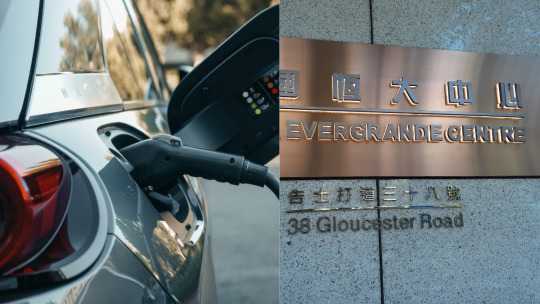
View On WordPress
#all electric cars#american electric car companies#bmw electric car#byd#byd battery#byd china electric car#byd company#byd e6#byd f3#byd han#byd hong kong#byd tang#charge point#charging stations near me#cheapest electric car#cheapest electric car europe#china best electric car#china cheap electric car#china electric car price#china electric vehicles#china ev car#chinese electric car#chinese electric vehicles#chinese ev#chinese ev cars#chinese mini electric car#cybertruck#electric car charging stations#electric car china alibaba#electric car companies
0 notes
Link
The electric SUV was able to take the top spot due to wider availability thanks to Tesla ramping up production at Gigafactory Berlin.
Tesla confirmed that Gigafactory Berlin achieved a production rate of 2,000 Model Y vehicles in a week at the end of September. Those Model Y SUVs are superficially for European markets, and Tesla continues to import more Model Y vehicles in Europe from China(..)
P.S. Legacy automakers are losing time, resources and profits trying to keep ICE vehicle production as long as possible. Tesla's position in the car market is completely safe, because this company has no real competitors in the European car market
#Tesla#Tesla Model Y#ev sales#competition#ev manufacturing#Giga Berlin#Europe#electric suv#electric vehicle#electric car#Germany#american car company
4 notes
·
View notes
Text
The Best News of Last Year - 2023 Edition
Welcome to our special edition newsletter recapping the best news from the past year. I've picked one highlight from each month to give you a snapshot of 2023. No frills, just straightforward news that mattered. Let's relive the good stuff that made our year shine.
January - London: Girl with incurable cancer recovers after pioneering treatment

A girl’s incurable cancer has been cleared from her body after what scientists have described as the most sophisticated cell engineering to date.
2. February - Utah legislature unanimously passes ban on LGBTQ conversion therapy

The Utah State Legislature has unanimously approved a bill that enshrines into law a ban on LGBTQ conversion therapy.
3. March - First vaccine for honeybees could save billions

The United States Department of Agriculture (USDA) has approved the world’s first-ever vaccine intended to address the global decline of honeybees. It will help protect honeybees from American foulbrood, a contagious bacterial disease which can destroy entire colonies.
4. April - Fungi discovered that can eat plastic in just 140 days
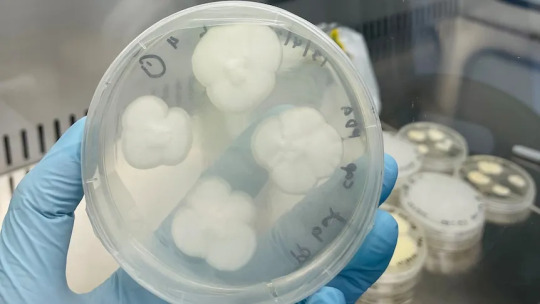
Australian scientists have successfully used backyard mould to break down one of the world's most stubborn plastics — a discovery they hope could ease the burden of the global recycling crisis within years.
5. May - Ocean Cleanup removes 200,000th kilogram of plastic from the Pacific Ocean

The Dutch offshore restoration project, Ocean Cleanup, says it has reached a milestone. The organization's plastic catching efforts have now fished more than 200,000 kilograms of plastic out of the Pacific Ocean, Ocean Cleanup said on Twitter.
6. June - U.S. judge blocks Florida ban on care for trans minors in narrow ruling, says ‘gender identity is real’

A federal judge temporarily blocked portions of a new Florida law that bans transgender minors from receiving puberty blockers, ruling Tuesday that the state has no rational basis for denying patients treatment.
7. July - World’s largest Phosphate deposit discovered in Norway

A massive underground deposit of high-grade phosphate rock in Norway, pitched as the world’s largest, is big enough to satisfy world demand for fertilisers, solar panels and electric car batteries over the next 50 years, according to the company exploiting the resource.
8. August - Successful room temperature ambient-pressure magnetic levitation of LK-99

If the claim by Sukbae Lee and Ji-Hoon Kim of South Korea’s Quantum Energy Research Centre holds up, the material could usher in all sorts of technological marvels, such as levitating vehicles and perfectly efficient electrical grids.
9. September - World’s 1st drug to regrow teeth enters clinical trials

The ability to regrow your own teeth could be just around the corner. A team of scientists, led by a Japanese pharmaceutical startup, are getting set to start human trials on a new drug that has successfully grown new teeth in animal test subjects.
10. October - Nobel Prize goes to scientists behind mRNA Covid vaccines

The Nobel Prize in Physiology or Medicine has been awarded to a pair of scientists who developed the technology that led to the mRNA Covid vaccines. Professors Katalin Kariko and Drew Weissman will share the prize.
11. November - No cases of cancer caused by HPV in Norwegian 25-year olds, the first cohort to be mass vaccinated for HPV.
Last year there were zero cases of cervical cancer in the group that was vaccinated in 2009 against the HPV virus, which can cause the cancer in women.
12. December - President Biden announces he’s pardoning all convictions of federal marijuana possession
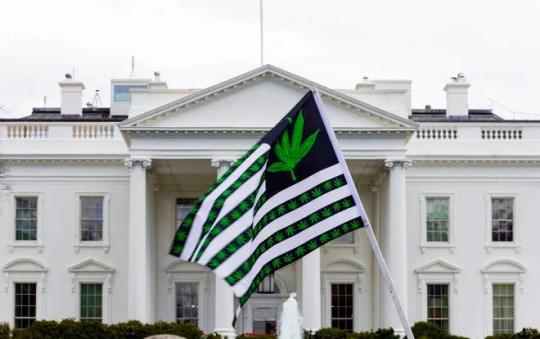
President Joe Biden announced Friday he's issuing a federal pardon to every American who has used marijuana in the past, including those who were never arrested or prosecuted.
------
And there you have it – a year's worth of uplifting news! I hope these positive stories brought a bit of joy to your inbox. As I wrap up this special edition, I want to thank all my supporters!
Buy me a coffee ❤️
Merry Christmas and Happy New Year!
6K notes
·
View notes
Text
You can’t buy the Seagull in the US. But I bet you wish you could.
A small hatchback around the size of a Mini Cooper, the Seagull is a fast-charging electric car and claims a range of up to 250 miles [...] BYD, its Chinese manufacturer, claims it can go from 30 percent to 80 percent charged in a half-hour using a DC plug. It’s hardly a luxury car but it’s well-equipped, with a power driver’s seat and cruise control. “If I were looking for an inexpensive commuter car … this would be perfect,” veteran car journalist John McElroy said after taking a drive.
The best part? Its base model costs about $10,700 in China.
That’s about a third of the cost of the cheapest EV you can buy in the US. In South America, it’s a little pricier, but still fairly affordable, at under $24,000 for a top-trim version. Even in Europe, you can get an entry-level BYD for under €30,000.
These are absolutely screaming deals — exactly the kind of products that could turbocharge our transition away from gas and toward electric vehicles.[...]
The problem for Americans? The Biden administration is hell-bent on preventing you from buying BYD’s product, and if Donald Trump returns to office, he is likely to fight it as well.
That’s because the BYD cars are made in China, and both Biden and Trump are committed to an ultranationalist trade policy meant to keep BYD’s products out. [...] Shipments to Europe have increased astronomically; Chinese companies sold 0.5 percent of EVs in Europe in 2019 but they’re already over 9 percent as of last year. Companies like BYD make cheap, reasonably good-quality cars people are eager to buy.
In 2018, Trump imposed, and Biden has since continued, a special 25 percent tax on Chinese-made autos, on top of the ordinary 2.5 percent tax on foreign-made cars.
That has so far prevented BYD and its Chinese peers from trying to enter the US market. US customer tastes are different enough that Chinese manufacturers would probably prefer to make cars tailored to them — but US policy has been so hostile toward cheap Chinese EVs that so far, the companies haven’t wanted to bother.
So, the result is that we’re left out of the bounty of cheap EV options created by BYD and others. “If you’re a consumer right now, the best place to be right now is China, because you have the best choice of EVs,” Ilaria Mazzocco, senior fellow at the Center for Strategic and International Studies and an expert on Chinese EVs, says.[...]
Still, China’s price advantage is big enough that even the extreme Trump-Biden import tax might not be enough to deter companies like BYD from entering the US market. Even with the tariffs, Chinese cars might be cheaper than their rivals. “Subsidies most likely won’t be enough; Mr. Biden will need to impose [more] trade restrictions,” climate journalist Robinson Meyer predicted recently. The Biden administration is already making noise about imposing even more draconian taxes or trade restrictions against these vehicles. Commerce Secretary Gina Raimondo has described Chinese-made cars as a national security threat, and recently announced an investigation into the vehicles’ data collection abilities and the possibility they could send movement data to Beijing.
On the one hand, Biden is offering Americans up to $7,500 per vehicle to buy EVs (provided they meet certain made-in-North America rules). On the other hand, he’s imposing massive taxes to keep Americans from buying EVs. It’s a bizarre policy that makes no sense from a climate perspective.[...]
[The Biden Administration] has proven shockingly willing to sabotage its own climate policy if it gets to stick it to the Chinese in the process.
“There’s almost an across-the-board apprehension about Chinese EVs, even though they would make an important contribution to [lower] CO2 emissions,” Gary Clyde Hufbauer, a veteran trade expert at the Peterson Institute for International Economics, says.[...]
Realistically, Helveston argues, BYD might not sell something like the Seagull in the US because it’s smaller than most cars Americans buy. They’d probably build plants in the US instead, or its free-trade zone partners Canada and Mexico, to build vehicles tailored for Americans. “If you’re going to really enter a market, you have to make it locally,” Helveston explains. “US automakers like GM sell and make millions of cars in China to sell in China.” BYD would do the same. Indeed, it’s already reportedly scouting sites for factories in Mexico.
If they ever were to set up shop in North America, BYD and other Chinese car companies would still have a major price advantage versus American EVs. They have years more experience and a much more successful track record of building batteries and EVs at low cost.
“Part of why they’re so successful is they’ve been thinking outside the box on cost reduction for a long time,” Mazzocco says. They took the “opposite of the Tesla approach”: starting not with luxury vehicles but ultra-cheap cars fit for taxi fleets and not much else, and constantly improving their early inexpensive prototypes. The result is that Chinese firms have gotten extremely good at making inexpensive EVs, at a time when Ford, by contrast, lost $28,000 for every EV it sold in 2023.[...]
“If you have more affordable EVs in the United States, no matter where you come from,” Gopal says, “that’s better for the climate.”
Still, the Biden administration reportedly wants to restrict Chinese car companies’ access to the US even if they do set up shop in North America. Bloomberg reported earlier this month that the Biden administration is formulating rules that would limit US sales of Chinese-made parts, even if they’re in vehicles ultimately assembled in the US or Mexico.[...]
But the Biden administration’s objections to Chinese EVs are also ideological. The Biden administration represents the victory of a protectionist, trade-skeptical wing of the Democratic party that was relegated to the sidelines during the Clinton and Obama years.[...]
[O]ver 90 percent of American households have a car, and surging car prices were a huge contributor to the 2021–2023 rise in inflation.
Barriers to importing cheap cars make inflation worse and reduce the real incomes of the middle class.
Not only are the administration and other left-leaning institutions opposed to Chinese EVs, but hardline conservatives at places like the Heritage Foundation are calling for outright bans on Chinese EVs as well. Their rationale is security, another theme the Biden administration evokes often. On Thursday, the Commerce Department announced it was beginning a process to “investigate the national security risks of … PRC-manufactured technology in [internet-connected] vehicles.”
6 Mar 24
518 notes
·
View notes
Text
Things Biden and the Democrats did, this week #10
March 15-22 2024
The EPA announced new emission standards with the goal of having more than half of new cars and light trucks sold in the US be low/zero emission by 2032. One of the most significant climate regulations in the nation’s history, it'll eliminate 7 billion tons of CO2 emissions over the next 30 years. It's part of President Biden's goal to cut greenhouse gas emissions in half by 2030 on the road to eliminating them totally by 2050.
President Biden canceled nearly 6 Billion dollars in student loan debt. 78,000 borrowers who work in public sector jobs, teachers, nurses, social workers, firefighters etc will have their debt totally forgiven. An additional 380,000 public service workers will be informed that they qualify to have their loans forgiven over the next 2 years. The Biden Administration has now forgiven $143.6 Billion in student loan debt for 4 million Americans since the Supreme Court struck down the original student loan forgiveness plan last year.
Under Pressure from the administration and Democrats in Congress Drugmaker AstraZeneca caps the price of its inhalers at $35. AstraZeneca joins rival Boehringer Ingelheim in capping the price of inhalers at $35, the price the Biden Admin capped the price of insulin for seniors. The move comes as the Federal Trade Commission challenges AstraZeneca’s patents, and Senator Bernie Sanders in his role as Democratic chair of the Senate Health Committee investigates drug pricing.
The Department of Justice sued Apple for being an illegal monopoly in smartphones. The DoJ is joined by 16 state attorneys general. The DoJ accuses Apple of illegally stifling competition with how its apps work and seeking to undermining technologies that compete with its own apps.
The EPA passed a rule banning the final type of asbestos still used in the United States. The banning of chrysotile asbestos (known as white asbestos) marks the first time since 1989 the EPA taken action on asbestos, when it passed a partial ban. 40,000 deaths a year in the US are linked to asbestos
President Biden announced $8.5 billion to help build advanced computer chips in America. Currently America only manufactures 10% of the world's chips and none of the most advanced next generation of chips. The deal with Intel will open 4 factories across 4 states (Arizona, Ohio, New Mexico, and Oregon) and create 30,000 new jobs. The Administration hopes that by 2030 America will make 20% of the world's leading-edge chips.
President Biden signed an Executive Order prioritizing research into women's health. The order will direct $200 million into women's health across the government including comprehensive studies of menopause health by the Department of Defense and new outreach by the Indian Health Service to better meet the needs of American Indian and Alaska Native Women. This comes on top of $100 million secured by First Lady Jill Biden from ARPA-H.
Democratic Senators Bob Casey, Tammy Baldwin, Sherrod Brown, and Jacky Rosen (all up for re-election) along with Elizabeth Warren, Cory Booker, and Sheldon Whitehouse, introduced the "Shrinkflation Prevention Act" The Bill seeks to stop the practice of companies charging the same amount for products that have been subtly shrunk so consumers pay more for less.
The Department of Transportation will invest $45 million in projects that improve Bicyclist and Pedestrian Connectivity and Safety
The EPA will spend $77 Million to put 180 electric school buses onto the streets of New York City This is part of New York's goal to transition its whole school bus fleet to electric by 2035.
The Senate confirmed President Biden's nomination of Nicole Berner to the Court of Appeals for the Fourth Circuit. Berner has served as the general counsel for America's largest union, SEIU, since 2017 and worked in their legal department since 2006. On behalf of SEIU she's worked on cases supporting the Affordable Care Act, DACA, and against the Defense of Marriage act and was part of the Fight for 15. Before working at SEIU she was a staff attorney at Planned Parenthood. Berner's name was listed by the liberal group Demand Justice as someone they'd like to see on the Supreme Court. Berner becomes one of just 5 LGBT federal appeals court judges, 3 appointed by Biden. The Senate also confirmed Edward Kiel and Eumi Lee to be district judges in New Jersey and Northern California respectively, bring the number of federal judges appointed by Biden to 188.
#Thanks Biden#Joe Biden#Democrats#politics#US politics#climate change#climate crisis#student loans#debt forgiveness#shrinkflation#women's health#drug prices
454 notes
·
View notes
Text
2,977 civilians died tragically in 9/11, 343 being firefighters.
Since then it has been “Never forget.” for over 20 years, the US attacked and destabilized an innocent country, and white ppl have further pushed the narrative that Muslims and Middle Easterners are all “evil terrorists”.
Now, in less than 6 months the OFFICIAL death toll in Gaza exceeds 30,000, half being CHILDREN. At least 200 doctors have died and many were TARGETED by IOF soldiers. I have seen children dismembered, maimed, sniped, run over, crushed, starved, scalped, exploded, burned, and strung up on the side of a building.
I have seen men, women, and children desperately digging through the rubble to find their mothers, fathers, sisters, brothers, children, friends, lovers etc.
I have seen brave doctors run outside to save injured civilians while at extremely high risk of being shot by snipers.
I have seen a father carrying BAGS full of his children’s remains.
I have seen a young girl, no more than 9, with a leg, an arm, and a hand blown off while her scalp hangs from her skull.
I have seen doctors speak out against the cruelty and ethnic cleansing while surrounded by the bodies of those they tried to save.
I have seen hundreds of pictures of NICU babies who were going to die soon because the hospital was about to run out of electricity.
I have read the first hand story of a father who traded one of his children for one of his brother’s children so that if one group dies at least one of their children would make it.
I have read posts from lgbt+ KIDS talking about how they regret not kissing their crush because they just watched them DIE.
I have seen the public posts of IDF and IOF soldiers where they show off the underwear and lingerie they looted from the drawers of the Gazans they are massacring.
I have listened to the screams of mothers after hearing their child is dead.
I have watched a teen boy’s gaze harden into something cold and empty after his entire family died in front of him, leaving him completely alone.
I have seen an IOF soldier throw a father and his baby into a giant wood burning oven just for fun.
I have seen many children with shell-shock, shaking because their minds and bodies can’t comprehend the horrors they have experienced.
I have seen tanks run over women actively giving birth on the roads of Gaza.
I have watched oldest siblings, no more than 11, take on the responsibility of keeping their younger siblings safe. I cannot comprehend how incredibly stressful that must be.
A little 6yo girl was trapped for 2 weeks in a car surrounded by the dead bodies of her family as they rotted.
This is all done with American tax dollars while companies like McDonalds give free food to Israeli soldiers. We are quite literally paying for this. 20% of your work and hard earned money is paying for the genocide of innocent people in Palestine.
This is NOT a political issue. This is a human rights issue.
Pro-Palestine is Pro-Humanity.
#free palestine 🇵🇸#from the river to the sea palestine will be free#free gaza#gaza#gaza strip#gaza genocide#free palestine#protest#israhell#fuck israel#fuck the police#fuck biden#fuck billionaires#fuck america#vote third party#taxes#human rights#palestinian genocide#genocide#ethnic cleansing#9/11#middle east#islamophobia#anti zionisim#zionsim is terrorism
556 notes
·
View notes
Link
Tesla is an all-electric car company founded in 2003 by American entrepreneurs Martin Eberhard and Marc Tarpenning. Tesla’s mission is to accelerate the world’s transition to sustainable energy. Tesla makes some of the safest, most efficient cars today.
1 note
·
View note
Text
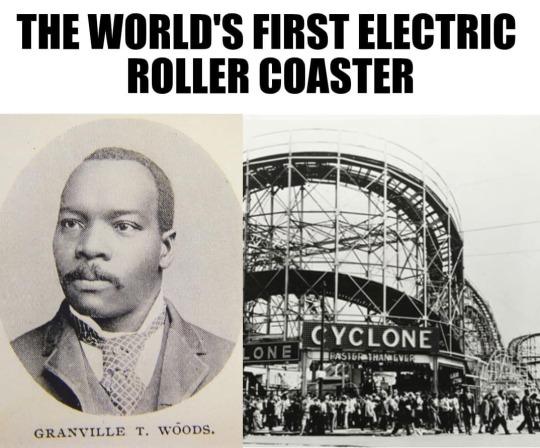
THE WORLD'S FIRST ELECTRIC ROLLER COASTER
Granville T. Woods (April 23, 1856 – January 30, 1910) introduced the “Figure Eight,” the world's first electric roller coaster, in 1892 at Coney Island Amusement Park in New York. Woods patented the invention in 1893, and in 1901, he sold it to General Electric.
Woods was an American inventor who held more than 50 patents in the United States. He was the first African American mechanical and electrical engineer after the Civil War. Self-taught, he concentrated most of his work on trains and streetcars.
In 1884, Woods received his first patent, for a steam boiler furnace, and in 1885, Woods patented an apparatus that was a combination of a telephone and a telegraph. The device, which he called "telegraphony", would allow a telegraph station to send voice and telegraph messages through Morse code over a single wire. He sold the rights to this device to the American Bell Telephone Company.
In 1887, he patented the Synchronous Multiplex Railway Telegraph, which allowed communications between train stations from moving trains by creating a magnetic field around a coiled wire under the train. Woods caught smallpox prior to patenting the technology, and Lucius Phelps patented it in 1884. In 1887, Woods used notes, sketches, and a working model of the invention to secure the patent. The invention was so successful that Woods began the Woods Electric Company in Cincinnati, Ohio, to market and sell his patents. However, the company quickly became devoted to invention creation until it was dissolved in 1893.
Woods often had difficulties in enjoying his success as other inventors made claims to his devices. Thomas Edison later filed a claim to the ownership of this patent, stating that he had first created a similar telegraph and that he was entitled to the patent for the device. Woods was twice successful in defending himself, proving that there were no other devices upon which he could have depended or relied upon to make his device. After Thomas Edison's second defeat, he decided to offer Granville Woods a position with the Edison Company, but Woods declined.
In 1888, Woods manufactured a system of overhead electric conducting lines for railroads modeled after the system pioneered by Charles van Depoele, a famed inventor who had by then installed his electric railway system in thirteen United States cities.
Following the Great Blizzard of 1888, New York City Mayor Hugh J. Grant declared that all wires, many of which powered the above-ground rail system, had to be removed and buried, emphasizing the need for an underground system. Woods's patent built upon previous third rail systems, which were used for light rails, and increased the power for use on underground trains. His system relied on wire brushes to make connections with metallic terminal heads without exposing wires by installing electrical contactor rails. Once the train car had passed over, the wires were no longer live, reducing the risk of injury. It was successfully tested in February 1892 in Coney Island on the Figure Eight Roller Coaster.
In 1896, Woods created a system for controlling electrical lights in theaters, known as the "safety dimmer", which was economical, safe, and efficient, saving 40% of electricity use.
Woods is also sometimes credited with the invention of the air brake for trains in 1904; however, George Westinghouse patented the air brake almost 40 years prior, making Woods's contribution an improvement to the invention.
Woods died of a cerebral hemorrhage at Harlem Hospital in New York City on January 30, 1910, having sold a number of his devices to such companies as Westinghouse, General Electric, and American Engineering. Until 1975, his resting place was an unmarked grave, but historian M.A. Harris helped raise funds, persuading several of the corporations that used Woods's inventions to donate money to purchase a headstone. It was erected at St. Michael's Cemetery in Elmhurst, Queens.
LEGACY
▪Baltimore City Community College established the Granville T. Woods scholarship in memory of the inventor.
▪In 2004, the New York City Transit Authority organized an exhibition on Woods that utilized bus and train depots and an issue of four million MetroCards commemorating the inventor's achievements in pioneering the third rail.
▪In 2006, Woods was inducted into the National Inventors Hall of Fame.
▪In April 2008, the corner of Stillwell and Mermaid Avenues in Coney Island was named Granville T. Woods Way.
483 notes
·
View notes
Text
In defense of bureaucratic competence
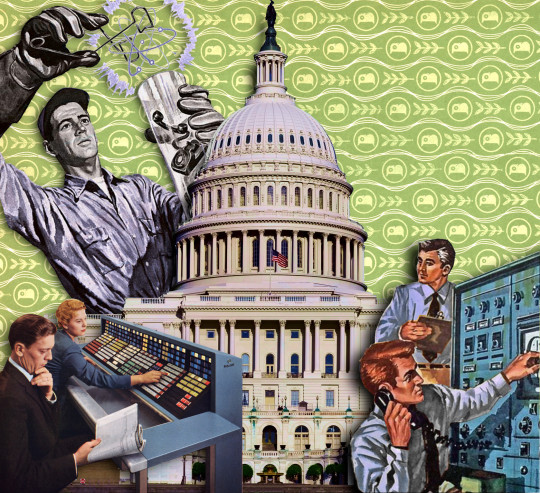
Sure, sometimes it really does make sense to do your own research. There's times when you really do need to take personal responsibility for the way things are going. But there's limits. We live in a highly technical world, in which hundreds of esoteric, potentially lethal factors impinge on your life every day.
You can't "do your own research" to figure out whether all that stuff is safe and sound. Sure, you might be able to figure out whether a contractor's assurances about a new steel joist for your ceiling are credible, but after you do that, are you also going to independently audit the software in your car's antilock brakes?
How about the nutritional claims on your food and the sanitary conditions in the industrial kitchen it came out of? If those turn out to be inadequate, are you going to be able to validate the medical advice you get in the ER when you show up at 3AM with cholera? While you're trying to figure out the #HIPAAWaiver they stuck in your hand on the way in?
40 years ago, Ronald Reagan declared war on "the administrative state," and "government bureaucrats" have been the favored bogeyman of the American right ever since. Even if Steve Bannon hasn't managed to get you to froth about the "Deep State," there's a good chance that you've griped about red tape from time to time.
Not without reason, mind you. The fact that the government can make good rules doesn't mean it will. When we redid our kitchen this year, the city inspector added a bunch of arbitrary electrical outlets to the contractor's plans in places where neither we, nor any future owner, will every need them.
But the answer to bad regulation isn't no regulation. During the same kitchen reno, our contractor discovered that at some earlier time, someone had installed our kitchen windows without the accompanying vapor-barriers. In the decades since, the entire structure of our kitchen walls had rotted out. Not only was the entire front of our house one good earthquake away from collapsing – there were two half rotted verticals supporting the whole thing – but replacing the rotted walls added more than $10k to the project.
In other words, the problem isn't too much regulation, it's the wrong regulation. I want our city inspectors to make sure that contractors install vapor barriers, but to not demand superfluous electrical outlets.
Which raises the question: where do regulations come from? How do we get them right?
Regulation is, first and foremost, a truth-seeking exercise. There will never be one obvious answer to any sufficiently technical question. "Should this window have a vapor barrier?" is actually a complex question, needing to account for different window designs, different kinds of barriers, etc.
To make a regulation, regulators ask experts to weigh in. At the federal level, expert agencies like the DoT or the FCC or HHS will hold a "Notice of Inquiry," which is a way to say, "Hey, should we do something about this? If so, what should we do?"
Anyone can weigh in on these: independent technical experts, academics, large companies, lobbyists, industry associations, members of the public, hobbyist groups, and swivel-eyed loons. This produces a record from which the regulator crafts a draft regulation, which is published in something called a "Notice of Proposed Rulemaking."
The NPRM process looks a lot like the NOI process: the regulator publishes the rule, the public weighs in for a couple of rounds of comments, and the regulator then makes the rule (this is the federal process; state regulation and local ordinances vary, but they follow a similar template of collecting info, making a proposal, collecting feedback and finalizing the proposal).
These truth-seeking exercises need good input. Even very competent regulators won't know everything, and even the strongest theoretical foundation needs some evidence from the field. It's one thing to say, "Here's how your antilock braking software should work," but you also need to hear from mechanics who service cars, manufacturers, infosec specialists and drivers.
These people will disagree with each other, for good reasons and for bad ones. Some will be sincere but wrong. Some will want to make sure that their products or services are required – or that their competitors' products and services are prohibited.
It's the regulator's job to sort through these claims. But they don't have to go it alone: in an ideal world, the wrong people will be corrected by other parties in the docket, who will back up their claims with evidence.
So when the FCC proposes a Net Neutrality rule, the monopoly telcos and cable operators will pile in and insist that this is technically impossible, that there is no way to operate a functional ISP if the network management can't discriminate against traffic that is less profitable to the carrier. Now, this unity of perspective might reflect a bedrock truth ("Net Neutrality can't work") or a monopolists' convenient lie ("Net Neutrality is less profitable for us").
In a competitive market, there'd be lots of counterclaims with evidence from rivals: "Of course Net Neutrality is feasible, and here are our server logs to prove it!" But in a monopolized markets, those counterclaims come from micro-scale ISPs, or academics, or activists, or subscribers. These counterclaims are easy to dismiss ("what do you know about supporting 100 million users?"). That's doubly true when the regulator is motivated to give the monopolists what they want – either because they are hoping for a job in the industry after they quit government service, or because they came out of industry and plan to go back to it.
To make things worse, when an industry is heavily concentrated, it's easy for members of the ruling cartel – and their backers in government – to claim that the only people who truly understand the industry are its top insiders. Seen in that light, putting an industry veteran in charge of the industry's regulator isn't corrupt – it's sensible.
All of this leads to regulatory capture – when a regulator starts defending an industry from the public interest, instead of defending the public from the industry. The term "regulatory capture" has a checkered history. It comes out of a bizarre, far-right Chicago School ideology called "Public Choice Theory," whose goal is to eliminate regulation, not fix it.
In Public Choice Theory, the biggest companies in an industry have the strongest interest in capturing the regulator, and they will work harder – and have more resources – than anyone else, be they members of the public, workers, or smaller rivals. This inevitably leads to capture, where the state becomes an arm of the dominant companies, wielded by them to prevent competition:
https://pluralistic.net/2022/06/05/regulatory-capture/
This is regulatory nihilism. It supposes that the only reason you weren't killed by your dinner, or your antilock brakes, or your collapsing roof, is that you just got lucky – and not because we have actual, good, sound regulations that use evidence to protect us from the endless lethal risks we face. These nihilists suppose that making good regulation is either a myth – like ancient Egyptian sorcery – or a lost art – like the secret to embalming Pharaohs.
But it's clearly possible to make good regulations – especially if you don't allow companies to form monopolies or cartels. What's more, failing to make public regulations isn't the same as getting rid of regulation. In the absence of public regulation, we get private regulation, run by companies themselves.
Think of Amazon. For decades, the DoJ and FTC sat idly by while Amazon assembled and fortified its monopoly. Today, Amazon is the de facto e-commerce regulator. The company charges its independent sellers 45-51% in junk fees to sell on the platform, including $31b/year in "advertising" to determine who gets top billing in your searches. Vendors raise their Amazon prices in order to stay profitable in the face of these massive fees, and if they don't raise their prices at every other store and site, Amazon downranks them to oblivion, putting them out of business.
This is the crux of the FTC's case against Amazon: that they are picking winners and setting prices across the entire economy, including at every other retailer:
https://pluralistic.net/2023/04/25/greedflation/#commissar-bezos
The same is true for Google/Facebook, who decide which news and views you encounter; for Apple/Google, who decide which apps you can use, and so on. The choice is never "government regulation" or "no regulation" – it's always "government regulation" or "corporate regulation." You either live by rules made in public by democratically accountable bureaucrats, or rules made in private by shareholder-accountable executives.
You just can't solve this by "voting with your wallet." Think about the problem of robocalls. Nobody likes these spam calls, and worse, they're a vector for all kinds of fraud. Robocalls are mostly a problem with federation. The phone system is a network-of-networks, and your carrier is interconnected with carriers all over the world, sometimes through intermediaries that make it hard to know which network a call originates on.
Some of these carriers are spam-friendly. They make money by selling access to spammers and scammers. Others don't like spam, but they have lax or inadequate security measures to prevent robocalls. Others will simply be targets of opportunity: so large and well-resourced that they are irresistible to bad actors, who continuously probe their defenses and exploit overlooked flaws, which are quickly patched.
To stem the robocall tide, your phone company will have to block calls from bad actors, put sloppy or lazy carriers on notice to shape up or face blocks, and also tell the difference between good companies and bad ones.
There's no way you can figure this out on your own. How can you know whether your carrier is doing a good job at this? And even if your carrier wants to do this, only the largest, most powerful companies can manage it. Rogue carriers won't give a damn if some tiny micro-phone-company threatens them with a block if they don't shape up.
This is something that a large, powerful government agency is best suited to addressing. And thankfully, we have such an agency. Two years ago, the FCC demanded that phone companies submit plans for "robocall mitigation." Now, it's taking action:
https://arstechnica.com/tech-policy/2023/10/telcos-filed-blank-robocall-plans-with-fcc-and-got-away-with-it-for-2-years/
Specifically, the FCC has identified carriers – in the US and abroad – with deficient plans. Some of these plans are very deficient. National Cloud Communications of Texas sent the FCC a Windows Printer Test Page. Evernex (Pakistan) sent the FCC its "taxpayer profile inquiry" from a Pakistani state website. Viettel (Vietnam) sent in a slide presentation entitled "Making Smart Cities Vision a Reality." Canada's Humbolt VoIP sent an "indiscernible object." DomainerSuite submitted a blank sheet of paper scrawled with the word "NOTHING."
The FCC has now notified these carriers – and others with less egregious but still deficient submissions – that they have 14 days to fix this or they'll be cut off from the US telephone network.
This is a problem you don't fix with your wallet, but with your ballot. Effective, public-interest-motivated FCC regulators are a political choice. Trump appointed the cartoonishly evil Ajit Pai to run the FCC, and he oversaw a program of neglect and malice. Pai – a former Verizon lawyer – dismantled Net Neutrality after receiving millions of obviously fraudulent comments from stolen identities, lying about it, and then obstructing the NY Attorney General's investigation into the matter:
https://pluralistic.net/2021/08/31/and-drown-it/#starve-the-beast
The Biden administration has a much better FCC – though not as good as it could be, thanks to Biden hanging Gigi Sohn out to dry in the face of a homophobic smear campaign that ultimately led one of the best qualified nominees for FCC commissioner to walk away from the process:
https://pluralistic.net/2022/12/15/useful-idiotsuseful-idiots/#unrequited-love
Notwithstanding the tragic loss of Sohn's leadership in this vital agency, Biden's FCC – and its action on robocalls – illustrates the value of elections won with ballots, not wallets.
Self-regulation without state regulation inevitably devolves into farce. We're a quarter of a century into the commercial internet and the US still doesn't have a modern federal privacy law. The closest we've come is a disclosure rule, where companies can make up any policy they want, provided they describe it to you.
It doesn't take a genius to figure out how to cheat on this regulation. It's so simple, even a Meta lawyer can figure it out – which is why the Meta Quest VR headset has a privacy policy isn't merely awful, but long.
It will take you five hours to read the whole document and discover how badly you're being screwed. Go ahead, "do your own research":
https://foundation.mozilla.org/en/privacynotincluded/articles/annual-creep-o-meter/
The answer to bad regulation is good regulation, and the answer to incompetent regulators is competent ones. As Michael Lewis's Fifth Risk (published after Trump filled the administrative agencies with bootlickers, sociopaths and crooks) documented, these jobs demand competence:
https://memex.craphound.com/2018/11/27/the-fifth-risk-michael-lewis-explains-how-the-deep-state-is-just-nerds-versus-grifters/
For example, Lewis describes how a Washington State nuclear waste facility created as part of the Manhattan Project endangers the Columbia River, the source of 8 million Americans' drinking water. The nuclear waste cleanup is projected to take 100 years and cost 100 billion dollars. With stakes that high, we need competent bureaucrats overseeing the job.
The hacky conservative jokes comparing every government agency to the DMV are not descriptive so much as prescriptive. By slashing funding, imposing miserable working conditions, and demonizing the people who show up for work anyway, neoliberals have chased away many good people, and hamstrung those who stayed.
One of the most inspiring parts of the Biden administration is the large number of extremely competent, extremely principled agency personnel he appointed, and the speed and competence they've brought to their roles, to the great benefit of the American public:
https://pluralistic.net/2022/10/18/administrative-competence/#i-know-stuff
But leaders can only do so much – they also need staff. 40 years of attacks on US state capacity has left the administrative state in tatters, stretched paper-thin. In an excellent article, Noah Smith describes how a starveling American bureaucracy costs the American public a fortune:
https://www.noahpinion.blog/p/america-needs-a-bigger-better-bureaucracy
Even stripped of people and expertise, the US government still needs to get stuff done, so it outsources to nonprofits and consultancies. These are the source of much of the expense and delay in public projects. Take NYC's Second Avenue subway, a notoriously overbudget and late subway extension – "the most expensive mile of subway ever built." Consultants amounted to 20% of its costs, double what France or Italy would have spent. The MTA used to employ 1,600 project managers. Now it has 124 of them, overseeing $20b worth of projects. They hand that money to consultants, and even if they have the expertise to oversee the consultants' spending, they are stretched too thin to do a good job of it:
https://slate.com/business/2023/02/subway-costs-us-europe-public-transit-funds.html
When a public agency lacks competence, it ends up costing the public more. States with highly expert Departments of Transport order better projects, which need fewer changes, which adds up to massive costs savings and superior roads:
https://papers.ssrn.com/sol3/papers.cfm?abstract_id=4522676
Other gaps in US regulation are plugged by nonprofits and citizen groups. Environmental rules like NEPA rely on the public to identify and object to environmental risks in public projects, from solar plants to new apartment complexes. NEPA and its state equivalents empower private actors to sue developers to block projects, even if they satisfy all environmental regulations, leading to years of expensive delay.
The answer to this isn't to dismantle environmental regulations – it's to create a robust expert bureaucracy that can enforce them instead of relying on NIMBYs. This is called "ministerial approval" – when skilled government workers oversee environmental compliance. Predictably, NIMBYs hate ministerial approval.
Which is not to say that there aren't problems with trusting public enforcers to ensure that big companies are following the law. Regulatory capture is real, and the more concentrated an industry is, the greater the risk of capture. We are living in a moment of shocking market concentration, thanks to 40 years of under-regulation:
https://www.openmarketsinstitute.org/learn/monopoly-by-the-numbers
Remember that five-hour privacy policy for a Meta VR headset? One answer to these eye-glazing garbage novellas presented as "privacy policies" is to simply ban certain privacy-invading activities. That way, you can skip the policy, knowing that clicking "I agree" won't expose you to undue risk.
This is the approach that Bennett Cyphers and I argue for in our EFF white-paper, "Privacy Without Monopoly":
https://www.eff.org/wp/interoperability-and-privacy
After all, even the companies that claim to be good for privacy aren't actually very good for privacy. Apple blocked Facebook from spying on iPhone owners, then sneakily turned on their own mass surveillance system, and lied about it:
https://pluralistic.net/2022/11/14/luxury-surveillance/#liar-liar
But as the European experiment with the GDPR has shown, public administrators can't be trusted to have the final word on privacy, because of regulatory capture. Big Tech companies like Google, Apple and Facebook pretend to be headquartered in corporate crime havens like Ireland and Luxembourg, where the regulators decline to enforce the law:
https://pluralistic.net/2023/05/15/finnegans-snooze/#dirty-old-town
It's only because of the GPDR has a private right of action – the right of individuals to sue to enforce their rights – that we're finally seeing the beginning of the end of commercial surveillance in Europe:
https://www.eff.org/deeplinks/2022/07/americans-deserve-more-current-american-data-privacy-protection-act
It's true that NIMBYs can abuse private rights of action, bringing bad faith cases to slow or halt good projects. But just as the answer to bad regulations is good ones, so too is the answer to bad private rights of action good ones. SLAPP laws have shown us how to balance vexatious litigation with the public interest:
https://www.rcfp.org/resources/anti-slapp-laws/
We must get over our reflexive cynicism towards public administration. In my book The Internet Con, I lay out a set of public policy proposals for dismantling Big Tech and putting users back in charge of their digital lives:
https://www.versobooks.com/products/3035-the-internet-con
The most common objection I've heard since publishing the book is, "Sure, Big Tech has enshittified everything great about the internet, but how can we trust the government to fix it?"
We've been conditioned to think that lawmakers are too old, too calcified and too corrupt, to grasp the technical nuances required to regulate the internet. But just because Congress isn't made up of computer scientists, it doesn't mean that they can't pass good laws relating to computers. Congress isn't full of microbiologists, but we still manage to have safe drinking water (most of the time).
You can't just "do the research" or "vote with your wallet" to fix the internet. Bad laws – like the DMCA, which bans most kinds of reverse engineering – can land you in prison just for reconfiguring your own devices to serve you, rather than the shareholders of the companies that made them. You can't fix that yourself – you need a responsive, good, expert, capable government to fix it.
We can have that kind of government. It'll take some doing, because these questions are intrinsically hard to get right even without monopolies trying to capture their regulators. Even a president as flawed as Biden can be pushed into nominating good administrative personnel and taking decisive, progressive action:
https://doctorow.medium.com/joe-biden-is-headed-to-a-uaw-picket-line-in-detroit-f80bd0b372ab?sk=f3abdfd3f26d2f615ad9d2f1839bcc07
Biden may not be doing enough to suit your taste. I'm certainly furious with aspects of his presidency. The point isn't to lionize Biden – it's to point out that even very flawed leaders can be pushed into producing benefit for the American people. Think of how much more we can get if we don't give up on politics but instead demand even better leaders.
My next novel is The Lost Cause, coming out on November 14. It's about a generation of people who've grown up under good government – a historically unprecedented presidency that has passed the laws and made the policies we'll need to save our species and planet from the climate emergency:
https://us.macmillan.com/books/9781250865939/the-lost-cause
The action opens after the pendulum has swung back, with a new far-right presidency and an insurgency led by white nationalist militias and their offshore backers – seagoing anarcho-capitalist billionaires.
In the book, these forces figure out how to turn good regulations against the people they were meant to help. They file hundreds of simultaneous environmental challenges to refugee housing projects across the country, blocking the infill building that is providing homes for the people whose homes have been burned up in wildfires, washed away in floods, or rendered uninhabitable by drought.
I don't want to spoil the book here, but it shows how the protagonists pursue a multipronged defense, mixing direct action, civil disobedience, mass protest, court challenges and political pressure to fight back. What they don't do is give up on state capacity. When the state is corrupted by wreckers, they claw back control, rather than giving up on the idea of a competent and benevolent public system.

If you'd like an essay-formatted version of this post to read or share, here's a link to it on pluralistic.net, my surveillance-free, ad-free, tracker-free blog:
https://pluralistic.net/2023/10/23/getting-stuff-done/#praxis
#pluralistic#nerd harder#private right of action#privacy#robocalls#fcc#administrative competence#noah smith#spam#regulatory capture#public choice theory#nimbyism#the lost cause#the internet con#evidence based policy#small government#transit#praxis#antitrust#trustbusting#monopoly
379 notes
·
View notes
Text
It's a new age of motoring. The old world of inefficient, gas-burning, polluting vehicles is over, and now is the time for zingy cough drops that do 0-60 in four seconds and have a bunch of annoying dinging sounds that you can't figure out how to turn off. If you're the kind of person who rides on an elevator and thinks "this could use more JavaScript," the world is your oyster.
Of course, no matter how many touchscreens, gewgaws, doodads, and fart noises you throw at an electric car, someone still has to build the car. You could go to a boring, old-technology company that worries about things like "bolts that fit," or you could take a gamble. You could step into the future and invest in a Switch Motors platform for your next electric car.
Switch Motors is the only small, unproven brand you need to risk millions of dollars and the livelihood of your employees on. We know about making a reliable car, because we know everything about how to make an unreliable car. And like Thomas Edison said before he was deluged by telemarketers: goddammit, why doesn't this thing work? Here's an example of our focus. Switch Motors cars are guaranteed to have at least four wheels, or we'll provide you with a pro-rated discount.
Don't care about the "car" part of electric cars? We've got you covered, with several platforms based entirely on classic Malaise Era American cars. Customers will love the straight chrome bumpers, which are easy to bang back into shape when they have a little whoopsy-doo at highway speeds while trying to quit their Zoom call. And our powertrains are proven – they come from high-end Chinese electric forklifts that we source from only the finest AliExpress vendors. No Wish.com for you, oh no: we're premium all the way.
Paint? Friend, paint slows you down. Besides, it looks way cooler when the arcs the motors kick off are shooting across the skin of the car like a Jacob's ladder. Keeps carjackers away, too. And pigeons. And anyone with a pacemaker. Maybe we can do something to improve that last part, I've got some Toyota water pumps around here somewhere. Switch Health Solutions sounds pretty good.
116 notes
·
View notes
Text
Jubilant Lincoln L100
Some say Luxury comes with Lincoln, a futuristic old car brand with great technology all over the brand name. the all-new model L100 concept may be the most dramatic example of the old and future combination. Modern looking, more aerodynamic, and bolder design was a jaw-dropper for everyone at the Pebble Beach show.
Recently, design teams were working hard for a more silk and futuristic car.…

View On WordPress
#1970 dodge challenger#2014 dodge charger#2015 challenger#2015 dodge charger#2021 lincoln aviator#2021 lincoln nautilus#2021 lincoln navigator#all electric cars#american electric car companies#aviator#bmw electric car#boss 429#byd#byd battery#byd china electric car#byd company#byd e6#byd f3#byd han#byd hong kong#byd tang#challenger#challenger car#challenger demon#challenger srt8#charge point#charger rt#charging stations near me#cheapest electric car#cheapest electric car europe
0 notes
Link
The first TESLA car sharing platform - OX DRIVE | starts operating in Latvia/Uzlādēts. The TESLA car sharing platform OX DRIVE has been established in Latvia, which plans to provide a sharing service with at least 130 Tesla cars in Latvia(..)
P.S. Every electric car on the road reduces the demand for Russian oil! Tired of high fuel prices, drive an electric car!
#ox drive#ev news in latvian#Latvia#fossil fuel phase-out#electric car#Tesla#Tesla Model 3#electric vehicle#Baltic States#russian defeat#american car company#defense of europe
5 notes
·
View notes
Text
The Best News of Last Week - March 13, 2023
🐝 - Did you hear about the honeybee vaccine? It's creating quite the buzz! But seriously, it's a major breakthrough in the fight against American foulbrood and could save billions of bees.
1. Transgender health care is now protected in Minnesota

Minnesota Governor Tim Walz signed an executive order protecting and supporting access to gender-affirming health care for LGBTQ people in the state, amidst Republican-backed efforts across the country to limit transgender health care. The order upholds the essential values of One Minnesota where all people, including members of the LGBTQIA+ community, are safe, celebrated, and able to live lives full of dignity and joy.
Numerous medical organizations have said that access to gender-affirming care is essential to the health and wellness of gender diverse people, while states like Tennessee, Arizona, Utah, Arkansas, Alabama, Mississippi, South Dakota, and Florida have passed policies or laws restricting transgender health care.
2. First vaccine for honeybees could save billions
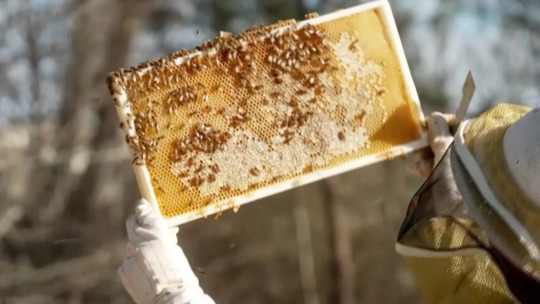
The US government has approved the world's first honeybee vaccine to fight against American foulbrood, a bacterial disease that destroys bee colonies vital for crop pollination.
Developed by biotech company Dalan Animal Health, the vaccine integrates some of the foulbrood bacteria into royal jelly, which is then fed to the queen by the worker bees, resulting in the growing bee larvae developing immunity to foulbrood. The vaccine aims to limit the damage caused by the infectious disease, for which there is currently no cure, and promote the development of vaccines for other diseases affecting bees.
3. Teens rescued after days stranded in California snowstorm: "We were already convinced we were going to die"

The recent snowstorms in California have resulted in dangerous conditions for hikers and residents in mountain communities. Two teenage hikers were rescued by the San Bernardino County sheriff's department after getting lost in the mountains for 10 days.
The boys were well-prepared for the hike but were not prepared for the massive amounts of snow that followed. They were lucky to survive, suffering from hypothermia and having to huddle together for three nights to stay warm.
Yosemite National Park has had to be closed indefinitely due to the excessive snowfall.
4. La Niña, which worsens Atlantic hurricanes and Western droughts, is gone

The La Nina weather phenomenon, which increases Atlantic hurricane activity and worsens western drought, has ended after three years, according to the National Oceanic and Atmospheric Administration. That's usually good news for the United States and other parts of the world, including drought-stricken northeast Africa, scientists said.
The globe is now in what's considered a "neutral" condition.
5. Where there's gender equality, people tend to live longer
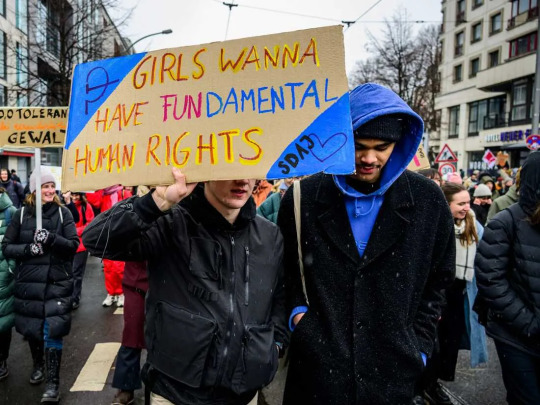
Both women and men are likely to live longer when a country makes strides towards gender equality, according to a new global study that authors believe to be the first of its kind.
The study was published in the journal PLOS Global Public Health this week. It adds to a growing body of research showing that advances in women's rights benefit everyone. "Globally, greater gender equality is associated with longer [life expectancy] for both women and men and a widening of the gender gap in [life expectancy]," they conclude.
6. New data shows 1 in 7 cars sold globally is an EV, and combustion engine car sales have decreased by 25% since 2017

Electric vehicles are the key technology to decarbonise road transport, a sector that accounts for 16% of global emissions. Compared with 2020, sales nearly doubled to 6.6 million (a sales share of nearly 9%), bringing the total number of electric cars on the road to 16.5 million.
Sales were highest in China, where they tripled relative to 2020 to 3.3 million after several years of relative stagnation, and in Europe, where they increased by two-thirds year-on-year to 2.3 million. Together, China and Europe accounted for more than 85% of global electric car sales in 2021
7. Lastly, watch this touching moment as rescued puppy gains trust in her new owners
youtube
By the way, this is my newly started YouTube channel. Subscribe for more wholesome videos :D
---
That's it for this week. If you liked this post you can support this newsletter with a small kofi donation:
Buy me a coffee ❤️
Let's carry the positivity into next week and keep spreading the good news!
749 notes
·
View notes
Text
Alastor - Historical Trivia And Headcanons

Alastor was a mixed-race Creole man living in New Orleans, and was in his 30's/40's when he died in 1933. We don't know much else about him, but historical context can provide us with possible additional details:
The population of New Orleans in 1930 was 458,762, more than it is now. 27.2% of the people were black, 3.1% were foreign-born, and roughly half of America's bipoc population was unemployed thanks to the Great Depression. New Orleans' original Francophonication was still strong, and it was common to run into locals who only spoke French dialects (Cajun French, Louisiana Creole). The city has had a huge Chinatown, a small Little Italy, and multiple other districts known for their immigrant African/colonized French cultures.
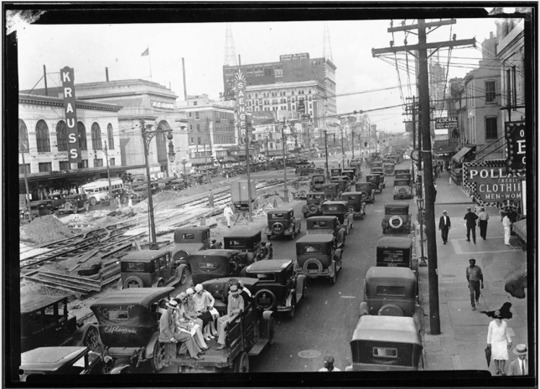
The Jim Crow laws were heavily enforced, as was the 'One Drop' rule. If Alastor was a mixed race black man, he would not have been able to attend a white school, use the same public transport, and would have shopped at black-local stores and restaurants under threat of violence. If he was mixed with any other race, some Jim Crow laws didn't apply, but state or city laws might specify differently.
Just because Alastor wears a suit, it doesn't mean he was rich in life. Radio personalities often didn't earn a fortune. Unless he owned his own broadcast, he was paid by a private company for long shifts of hosting music, news, and radio plays. In 1930, 40% of households owned at least one radio, which means that a popular radio host would have been easily recognized.
If he was in his late 30's in 1933, he might have fought in WW1, so long as he was over the age of 21. Some cities gave veterans small benefits, or encouraged the community to give them jobs. This often did not include veterans of color.
New Orleans was famous for being one of the least Christian cities in America, thanks to its unique immigrant and slave population. Haitian-based faiths and practices (such as voudo), indigenous cultures, Asian Buddhism, and atheism were common. But Christianity was still the official, law-enforced religion. Schooling involved reading the Bible, laws were sworn to Jesus, etc.
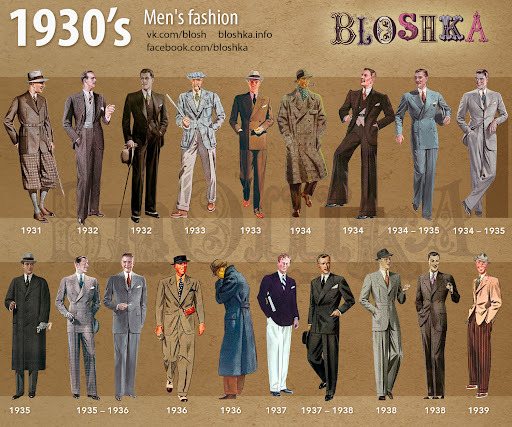
Alastor's outfit in Hazbin Hotel isn't very accurate to real-life American men's fashions of the time. Back then, deviating from the norm with the smallest detail would have stuck out like a sore thumb - like his white-lined lapels. Men always wore a hat. They were allowed to go without a waistcoat, but not a jacket. Belts were becoming more popular than suspenders. The silhouette was bulkier than the slimmer, Italian cuts of our modern times, especially the pants. Hair was kept short, and oiled down in a side part. Americans preferred the clean shaven look. Ties were essential unless you were a blue-collar laborer. Colors were almost universally muted neutral tones for everyday wear. The most colorful textiles for men were sporting outfits, like a tennis jacket.
If Alastor was a middle-class single man, he likely would have lived in an inner-city apartment, in an ethnic neighborhood. He probably didn't own a car, and took public transit like the streetcars. If he owned a house, it would likely have been an inheritance, and even the more opulent houses of the time would have looked small and plain to our eyes.
Because of the Great Depression, unmarried men were becoming the norm, rather than the exception. Men of the community who were sought after but remained single were suspect to gossip, but less ire than you might think; in the '30s, American queer culture was going through a very sharp revival, escaping the rigid Victorian era and before the puritan 40's/50's. But as a mixed-race man, it may have been illegal for a white woman to marry him, as the Jim Crow laws forbade the marriage of white people and Black/Asian people.
A middle class city household would have had electricity, gas heating, indoor plumbing, but may not have had running taps or a gas stove. Even with decent means, Alastor might have been using a potbelly woodburning stove, a dry sink/washbasin, wooden bathtub, and did his own laundry instead of sending it to the neighborhood laundresses. He may or may not have bothered with an icebox. Fresh groceries needed to be cooked and eaten soon, as things like pasteurized milk or store refrigeration wasn't a thing.
If he had enough money, then he almost certainly hired maids or other servants. Whether the maid came over just once a week, or did the shopping and laundry every other day, hired help was much more common back then, especially if he had no wife.
The most popular musicians in 1933 were Bing Crosby, George Olsen, and Leo Reisman. As you might have noticed, it was trendy for the lead singer to be backed by an orchestra, not a 'band' of just four other people like today. The most popular radio shows were Dick Tracy, Sherlock Holmes, and Doc Savage. They were recordings the radio station would buy and then broadcast, or sometimes the actors were live on the air. The radio host was usually not the journalist - the production team was responsible for writing his script.

#alastor#alastor the radio demon#hazbin hotel#hazbin alastor#alastor headcanons#hazbin hotel headcanon
107 notes
·
View notes
Text
People in the notes of my post about Tesla removing the gear selectors from its new cars, asking how that's even legal, clearly have no idea just how incompetent and slow-paced the NHTSA is.
Halogen headlights weren't legal until 1979.
Composite headlights (the uniquely designed ones that aren't the old-school circle or square ones you see on older cars) weren't legal until 1984.
Adaptive High Beams (Matrix Headlights) were only recently legalized, in 2022; and the regulations and testing procedures in order to approve them are so haphazard and over-complicated compared to Europe's that not a single automaker has even made them available.
Side Curtain airbags still are not mandated in the United States.
Turn Signals can be red in the U.S., as opposed to the statistically safer amber which is mandatory in Europe.
Making that worse, those red turn signals are allowed to share lamps with the brake lights. This means if you have your turn signal on, 1/3 of your brake lights can’t do their job because they're too busy doing another job.
There is no law in the United States dictating that an electric car must put on its brake lights when Regen braking. In fact, the law specifically states that only the friction brakes are required to activate brake lights. You can bring a Hyundai Ioniq 5 & 6, Kia EV6, Genesis GV60, and many other EVs to a rapid, complete stop without ever activating the brake lights.
Early model Chevrolet Bolt EVs and some Mercedes-Benz EVs will activate the brake lights appropriately when slowing down, but will deactivate their brake lights once they've come to a complete stop, allowing the car to sit at a standstill in the road without any indicator that it isn't traveling at the same speed as you are.
It's completely up to the automaker to decide how (or even if) to implement regen brake lighting. EVs and Hybrids have been around since the late 1990s and this still hasn't changed.
The US government STILL only evaluates a vehicles crash safety by crash testing it at 35 mph into a flat wall and t-boning it with a barrier representing a 3,000 lb sedan. They don't do an offset frontal test or a truck-barrier side test like the IIHS has been doing for private insurance companies for over a decade.
The NHTSA performs ZERO pedestrian crash safety tests like EuroNCAP does.
Oh, and on the topic of gear selectors, those aren't regulated at all. Here are some examples from modern cars, both electric and not:
BMW i3 & Nissan LEAF (Electric):
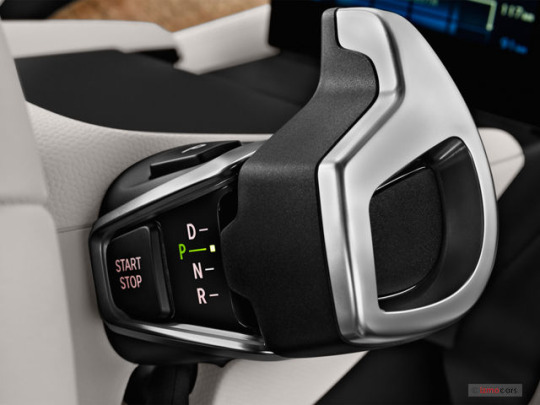

Toyota Prius (Hybrid) & Honda Clarity (Plug-in Hybrid):

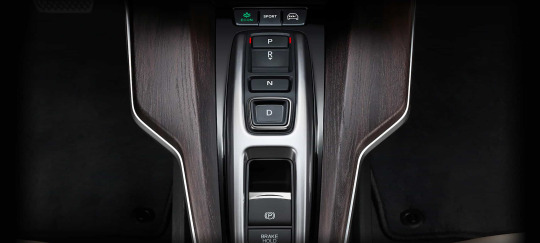
RAM 1500 & Cadillac Escalade (Gasoline):

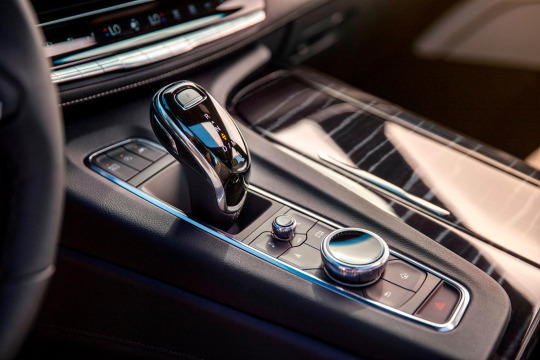
The automotive rules of the American government are pure chaos, and that’s if they're even there at all. If you're seriously asking how Tesla can allow a car to select reverse on its own, and then put the manual override in the touch screen, I mean, that's just scratching the surface.
If you wanna learn more, Technology Connections on YouTube has some great videos on the Turn Signal issue, the EV Regen brake light issue, and the history of the headlight regulations. I highly recommend you check them out because it truly puts into perspective just how awful the NHTSA is at doing its one job: keeping safety standards up-to-date.
#rambles#america#nhtsa#vehicle safety#regulations#car#cars#ev#evs#tesla#fuck tesla#electric cars#electric car#electric vehicles#safety
168 notes
·
View notes
Text

Cadillac was founded in 1902 by Henry Leland, who named the company after Antoine de la Mothe Cadillac, who happens to be the founder of Detroit. Just 6 short years later Cadillac brought the idea of interchangeable parts to the automotive industry and laid the ground work for modern mass production of automobiles. As a result, Cadillac became the first American car to win the prestigious Dewar Trophy from the Royal Automobile Club of England. After earning such high praise Cadillac adopted the slogan "Standard of the World."
In 1910, Cadillac became the first company to offer a passenger car with a fully enclosed cabin, a major change from the vehicles of the time. Two years after that, in 1912, the company released the Model Thirty, the car with no crank, which was the first production car to feature an electronic self-starter, ignition, and lighting. By dropping the crank starter, Cadillac opened the door to women drivers, and was able to bring the prestigious Dewar trophy back to Detroit, making Cadillac the only car manufacturer to claim the award twice. Nearly three years later, Cadillac brought the world the V-type, water-cooled, eight cylinder (V8) engine, which would become the signature of the Cadillac brand.
The Roaring 20's was not only a big decade for the country but was also important for Cadillac. In 1926, Cadillac branched out and offered customers more than 500 color combinations to choose from. As the famous Henry Ford saying goes, you can have any color you want, as long as it's black. Cadillac changed this mentality. That same year, the company brought in designer Harley Earl to design the 1927 LaSalle convertible coupe, which made the car the first to be designed from a designer's perspective rather than an engineering one. What Earl created was elegant, with flowing lines, chrome-plate fixtures, and an overarching design philosophy, that made the Cadillac brand known for beauty and luxury.
In the middle of the 1930's a midst The Great Depression, while most companies and families were struggling Cadillac created the first V-type 16-cylinder engine for use in a passenger car. This engine would go on to be one of the most iconic engines in Cadillac history. Shortly thereafter, Cadillac released a V12 version to give buyers something between the already popular V8 and new V16 engines.
Cadillac went quiet in the 1941's when they suspended automobile production to help produce planes for the war. After the war ended Cadillac adapted some of the aircraft technology and created the first ever tailfin on a vehicle. This feature is now found on almost every car and was one of the biggest reasons that Cadillac was given the first ever Car of the Year award in 1949.
The tailfin took off rather quickly and by the mid to late 1950's it was being featured heavily in the design of nearly every vehicle. Also in the 50's Cadillac began developing power steering, which helped the automaker take third, tenth, and eleventh places at the 24 Hours of Le Mans. After Cadillac's stunning "victories" power steering quickly became the new standard of the industry.
Small but meaningful innovations filled the 1960's for Cadillac. In 1963, the company made front seatbelts standard in their vehicles, which lead to the eventual passing of a federal law requiring front seatbelts in all vehicles just one year later. Then, in 1964, Cadillac brought to market automatically controlled headlamps and redefines luxury with Comfort Control, the industry's first thermostatically controlled heating, venting, and air-conditioning system. Over the next few years, Cadillac introduced variable-ratio power steering, electric seat warmers, and stereo radio.
While the 1960's were fairly quiet, with only some smaller, luxury items being introduced, Cadillac started out 1970 with a major bang. Cadillac opened the decade by unveiling the 400 horsepower, 8.2-liter engine Eldorado. With its completely redesigned axle this model boasted the highest torque capacity of any passenger car available at the time. Closing out the decade, Cadillac brought to market the 1978 Seville which used onboard microprocessors in its digital display. This started the era of the computerized automobile.
Throughout the 1980's Cadillac laid low, working on some new technologies that would come to market in the early parts of the 1990's. The first feature to debut was an electronic traction control system on front-wheel drive vehicles. Cadillac began offering this as a standard feature on the 1990 Cadillac Allante. This same year Cadillac would go on to win the Malcolm Baldrige National Quality Award. Two years later, in 1992, the company developed a feature that allowed the engine to run for up to 50 miles without coolant, and a unique induction system for near-perfect fuel distribution. The Seville Touring Sedan of that year would become known as the "Cadillac of the Year" thanks to features such as an all electronically controlled Powertrain, traction control, anti-lock brakes and speed-sensitive suspension. Closing out the decade, Cadillac introduced the, now iconic, Escalade SUV.
CELEBRATING 100 YEARS AS 'THE STANDARD OF THE WORLD'
Coming up on the 100th anniversary of the Cadillac brand, the company had to do something big or the decade, and they did not disappoint. Cadillac started off the 200's by introducing the F-22 stealth aircraft inspired Cien Concept, which ended up winning a few design awards. Later in the decade, in 2008, Cadillac expanded the Escalade SUV by making it the world's first full-size luxury hybrid SUV. In the same year, the company redeveloped the CTS Sedan. This redesign has been incredibly popular and even won the coveted 2008 Car of the Year award. A short year later, the performance edition CTS-V, becomes the fasted V8 production sedan in the world, establishing a record lap time of 7:59:32 on Germany's famed Nürburgring.
#cadillac#cadillac eldorado#cadillac fleetwood#cadillac deville#cadillac coupe de ville#Cadillac escalade#car#cars#Cadillac Escalade SUV
60 notes
·
View notes